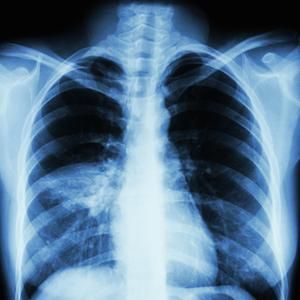[1]
Semenkovich TR,Frederiksen C,Hudson JL,Subramanian M,Kollef MH,Patterson GA,Kreisel D,Meyers BF,Kozower BD,Puri V, Postoperative Pneumonia Prevention in Pulmonary Resections: A Feasibility Pilot Study. The Annals of thoracic surgery. 2019 Jan
[PubMed PMID: 30291834]
Level 2 (mid-level) evidence
[2]
Silva ARAD,Silva TCD,Bom GJT,Vasconcelos RMB,Junior RS, Ventilator-associated pneumonia agents in Brazilian Neonatal Intensive Care Units - a systematic review. The Brazilian journal of infectious diseases : an official publication of the Brazilian Society of Infectious Diseases. 2018 Jul - Aug
[PubMed PMID: 30278872]
Level 1 (high-level) evidence
[3]
Antcliffe DB,Wolfer AM,O'Dea KP,Takata M,Holmes E,Gordon AC, Profiling inflammatory markers in patients with pneumonia on intensive care. Scientific reports. 2018 Oct 3
[PubMed PMID: 30283005]
[5]
Iosifidis E,Pitsava G,Roilides E, Ventilator-associated pneumonia in neonates and children: a systematic analysis of diagnostic methods and prevention. Future microbiology. 2018 Sep
[PubMed PMID: 30256161]
Level 1 (high-level) evidence
[6]
Watson K,Heales LJ,Fernando J,Reoch J,Tan E,Smith K,Austin D,Divanoglou A, Incidence and characteristics of ventilator-associated pneumonia in a regional non-tertiary Australian intensive care unit: protocol for a retrospective clinical audit study. BMJ open. 2018 Sep 8
[PubMed PMID: 30196266]
Level 2 (mid-level) evidence
[7]
Ferrer M,Torres A, Epidemiology of ICU-acquired pneumonia. Current opinion in critical care. 2018 Oct
[PubMed PMID: 30080701]
Level 3 (low-level) evidence
[8]
Phillips-Houlbracq M,Ricard JD,Foucrier A,Yoder-Himes D,Gaudry S,Bex J,Messika J,Margetis D,Chatel J,Dobrindt U,Denamur E,Roux D, Pathophysiology of Escherichia coli pneumonia: Respective contribution of pathogenicity islands to virulence. International journal of medical microbiology : IJMM. 2018 Mar
[PubMed PMID: 29325882]
[10]
Dianti M,Luna CM, Do we need biomarkers for the follow-up and shortening of antibiotic treatment duration? Current opinion in critical care. 2018 Oct
[PubMed PMID: 30124483]
Level 3 (low-level) evidence
[11]
Ambaras Khan R,Aziz Z, The methodological quality of guidelines for hospital-acquired pneumonia and ventilator-associated pneumonia: A systematic review. Journal of clinical pharmacy and therapeutics. 2018 Aug
[PubMed PMID: 29722052]
Level 2 (mid-level) evidence
[12]
Chomton M,Brossier D,Sauthier M,Vallières E,Dubois J,Emeriaud G,Jouvet P, Ventilator-Associated Pneumonia and Events in Pediatric Intensive Care: A Single Center Study. Pediatric critical care medicine : a journal of the Society of Critical Care Medicine and the World Federation of Pediatric Intensive and Critical Care Societies. 2018 Dec
[PubMed PMID: 30234676]
[13]
Martin-Loeches I,Rodriguez AH,Torres A, New guidelines for hospital-acquired pneumonia/ventilator-associated pneumonia: USA vs. Europe. Current opinion in critical care. 2018 Oct
[PubMed PMID: 30063491]
Level 3 (low-level) evidence
[14]
Niederman MS, Antibiotic treatment of hospital-acquired pneumonia: is it different from ventilator-associated pneumonia? Current opinion in critical care. 2018 Oct
[PubMed PMID: 30028739]
Level 3 (low-level) evidence
[15]
Jam R,Mesquida J,Hernández Ó,Sandalinas I,Turégano C,Carrillo E,Pedragosa R,Valls J,Parera A,Ateca B,Salamero M,Jane R,Oliva JC,Delgado-Hito P, Nursing workload and compliance with non-pharmacological measures to prevent ventilator-associated pneumonia: a multicentre study. Nursing in critical care. 2018 Sep 5
[PubMed PMID: 30182383]
[16]
Munro S,Haile-Mariam A,Greenwell C,Demirci S,Farooqi O,Vasudeva S, Implementation and Dissemination of a Department of Veterans Affairs Oral Care Initiative to Prevent Hospital-Acquired Pneumonia Among Nonventilated Patients. Nursing administration quarterly. 2018 Oct/Dec
[PubMed PMID: 30180083]
Level 2 (mid-level) evidence
[17]
Chen Z,Shi X, Adverse events of high-dose tigecycline in the treatment of ventilator-associated pneumonia due to multidrug-resistant pathogens. Medicine. 2018 Sep
[PubMed PMID: 30235740]
[18]
Pozuelo-Carrascosa DP,Torres-Costoso A,Alvarez-Bueno C,Cavero-Redondo I,López Muñoz P,Martínez-Vizcaíno V, Multimodality respiratory physiotherapy reduces mortality but may not prevent ventilator-associated pneumonia or reduce length of stay in the intensive care unit: a systematic review. Journal of physiotherapy. 2018 Oct
[PubMed PMID: 30220625]
Level 1 (high-level) evidence

